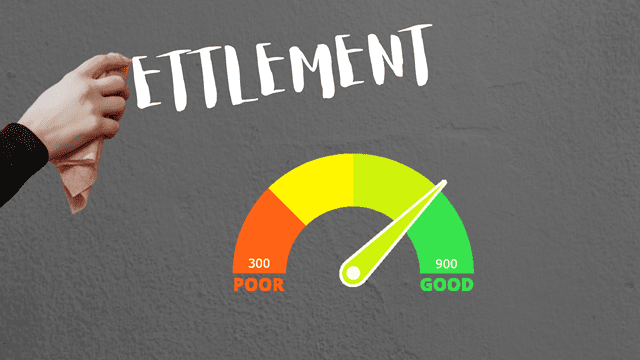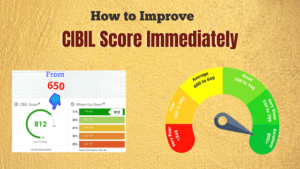A CIBIL report is a very crucial thing nowadays. It contains details of a person’s credit history, such as the number of loan or card accounts, loan amount, lender’s name, and overall payment history. If you have a basic knowledge about the CIBIL report, you may be familiar with the word Settlement or “Settled .”Now, you may ask what does “Settled” exactly means from the CIBIL perspective?
Well, in a simple sentence, it means that the borrower didn’t pay a loan entirely; but agreed to pay less than the entire due amount. A single “Settled” status is enough to make your CIBIL score incredibly poor. It is also impossible to get a new loan if you have this status in your CIBIL report because your new lender may see you as a risky customer.
Remove the “Settlement” status from the CIBIL report:
Removing a “Settlement” status from your CIBIL report is a challenging task but not impossible, although it is a time taking process. The most important thing you need to do; pays back the remaining (outstanding) amount to the lender.
Because CIBIL does not remove or modify any record themselves until they receive the confirmation from the respected lender. And CIBIL will only get confirmation from the lender or bank when you clear all the outstanding amounts and request them to remove the status. So, the only option left behind is to pay the entire overdue to the lender to remove the “Settled” status from your CIBIL report.
But, before doing that, read the following basic processes –
1). Create an online dispute on CIBIL’s official website against the account. After making the online dispute, save the dispute id as it may be required later.
2). Now, do send an email to the respected lender. Attach all your KYC-related documents and your latest CIBIL report in the email. In case the lender may be a bank or an NBFC. In the email, you have to write your name, address, Date of Birth, PAN card number, Aadhar card number, etc.
After that, write your CIBIL control number and the account details like sanctioned amount, current balance, overdue amount, date of open, etc.
Then describe your query, inform them that you want to pay the outstanding, and ask their suggestion on these issues. You may also ask for a written assurance that they will remove the “Settled” status from your CIBIL report after receiving the payment.
3). Wait a few days until you get a response from their side. Then, forward the email again to the same email address if you haven’t received any response so far. You may also call the lender directly for further assistance. In most cases, the bank will offer you to pay the remaining outstanding amount to clear the settlement status.
They may provide you with multiple payment options such as credit card, net banking, UPI, etc. But in some cases, you may also need to visit the bank to pay the overdue via cash or cheque.
After clearing all the remaining outstanding amounts, ask the bank or lender to provide the No Due Certificate or NDC. When you have no overdue in your account, the lender will surely give you a NOC or NDC within a few days.
4). Now you have the payment receipt, No Due Certificate, in your hand. Attach a copy of these documents with a fresh new email. Describe the details and request them remove the “Settlement” status as early as possible. You may also send these documents as a reply email to their early response.
If everything goes successfully, the lender or the bank will remove the “Settlement” status from your CIBIL report from their side. But, it may take up to 30 days to reflect the update in your CIBIL report.
5). Now, check your most recent CIBIL report at least 30 days after receiving any further confirmation email. If you find the “Settlement” status still exists in the new report, immediately write back to the lender again with the new or recent CIBIL report and ask for their explanation on it.
Do a phone call to the lender and CIBIL customer care and tell them the problem. Follow their process step by step, and I hope your problem will solve accordingly.
Now you may ask how you get the lender’s email address? First, make a google search or visit the lender’s official website, then go to the contact page, and you will surely get the email ids of the lender.
Read More:






Settlement show my civil but I have no any settlement…..please remove settlement of my civil
Please get in touch with our helpline. Our helpline number is 9674755222 or 9088338222. Contact between 10 am to 8 pm from Monday to Saturday.
Pingback: 800+ CIBIL Score, 9 Tips To Increase CIBIL Score In 2023 .
Pingback: How to solve data mixing errors in CIBIL report?
Pingback: Can you remove Written off and Account Sold status from your CIBIL report?
Pingback: How to remove fake loan from CIBIL report quickly?
Pingback: How to rectify CIBIL report in 2024?
My account NpA
How can we help you?
Pingback: How to remove Suit Filed from CIBIL report in 2024?
Pingback: Best P2P Lending Platform in India 2023
Pingback: Can you remove fraud loan from CIBIL report?
Pingback: How to Get a Personal Loan with a low CIBIL score?
Pingback: How to solve CIBIL error through CIBIL chat box ?
Pingback: What is a good CIBIL score? - Naskar Financial Services
Pingback: How to raise a dispute in CIBIL online?